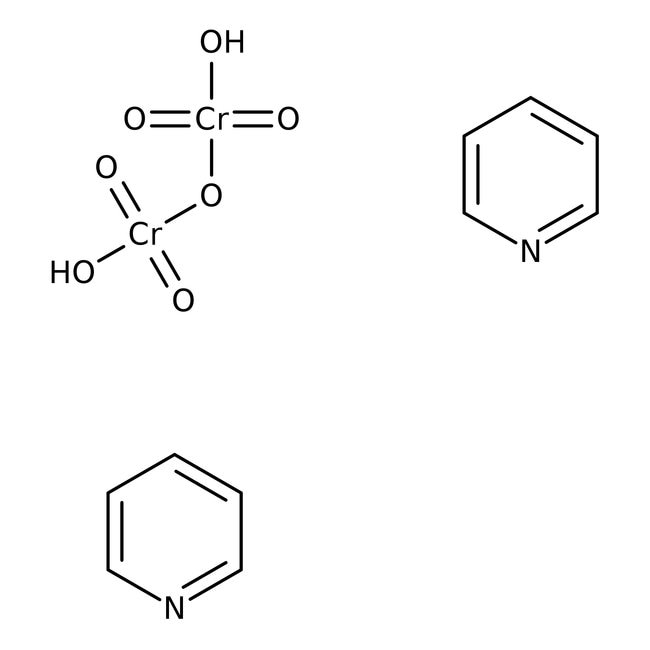Search Thermo Fisher Scientific
Pyridinium dichromate, 98%, Thermo Scientific Chemicals



Pyridinium dichromate, 98%, Thermo Scientific Chemicals
Chemical Identifiers
Specifications
Description
This Thermo Scientific Chemicals brand product was originally part of the Alfa Aesar product portfolio. Some documentation and label information may refer to the legacy brand. The original Alfa Aesar product / item code or SKU reference has not changed as a part of the brand transition to Thermo Scientific Chemicals.
Pyridinium dichromate acts as a strong oxidizing agent used in the conversion of primary alcohols and secondary alcohols to aldehydes and ketones respectively. It plays an important role in the oxidation of unsaturated tertiary alcohols, silyl ethers, the carbon-boron bond, and oximes. Further, it is used in the conversion of acetals to esters and didehydroketones to enones in the presence of tert-butyl hydroperoxide.
Solubility
Soluble in water, dimethyl formamide, dimethyl sulfoxide and acetonitrile. Slightly soluble in dichloromethane, chloroform and acetone. Insoluble in hexane, ether and ethyl acetate.
Notes
Hygroscopic. Incompatible withorganic materials and powdered metals.
Figures
Documents & Downloads
Certificates
Frequently asked questions (FAQs)
Citations & References
Safety and Handling
Classification of the substance or mixture
CLP classification - Regulation(EC) No 1272/2008
Label Elements
Signal Word
Danger
Hazard Statements
H314 - Causes severe skin burns and eye damage
H350i - May cause cancer by inhalation
H410 - Very toxic to aquatic life with long lasting effects
Physical Hazards
H228 - Flammable solid
H272 - May intensify fire; oxidizer
Precautionary Statements
P210 - Keep away from heat, hot surfaces, sparks, open flames and other ignition sources. No smoking
P221 - Take any precaution to avoid mixing with combustibles
P273 - Avoid release to the environment
P280 - Wear protective gloves/protective clothing/eye protection/face protection
P305 + P351 + P338 - IF IN EYES: Rinse cautiously with water for several minutes. Remove contact lenses, if present and easy to do. Continue rinsing
P310 - Immediately call a POISON CENTER or doctor/physician
Additional EU labelling
Restricted to professional users